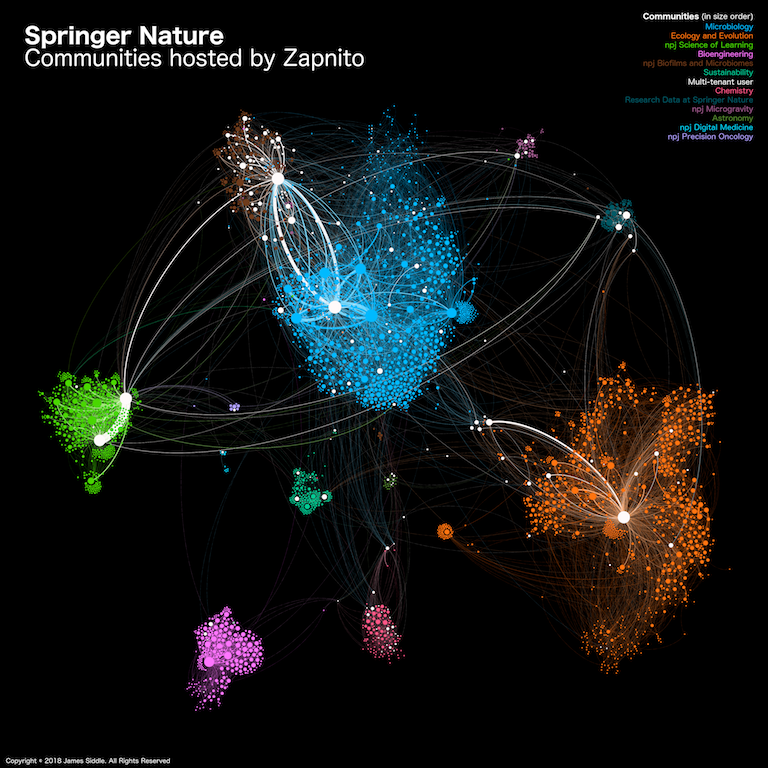
From the post:
What can we learn about the knowledge sharing by looking at the structure of the Springer Nature network?
Some structure is immediately obvious, notably the fact that there are clear, distinct modules for the different communities, and with strong links between some communities (which is discussed below). In terms of size, some communities are clearly bigger than others, which is likely due to a combination of maturity and topic popularity. Some communities are three years old, while others are only a couple of months old, and some research topics are especially popular, while others are relatively niche.
Communities tend to be dominated by a small number of individuals, who are likely to be experts and prime contributors in terms of knowledge. The bigger communities also have many “second tier” contributors with strong connections to the prime contributor.
This is particularly evident in the Microbiology and npj Science of Learning communities, and may be a result of “preferential attachment”, where newer community members prefer to connect with already well-connected individuals who are in a strong position to influence others.
The network density (that is, the level of connectedness between people) within each community is characteristic of the Zapnito “expert network” use case, where there is a moderate degree of connectedness. This is in contrast to other use cases such as content hub or peer-to-peer learning, which tend to be sparsely connected as they are focused on more traditional publishing models.
No comments:
Post a Comment